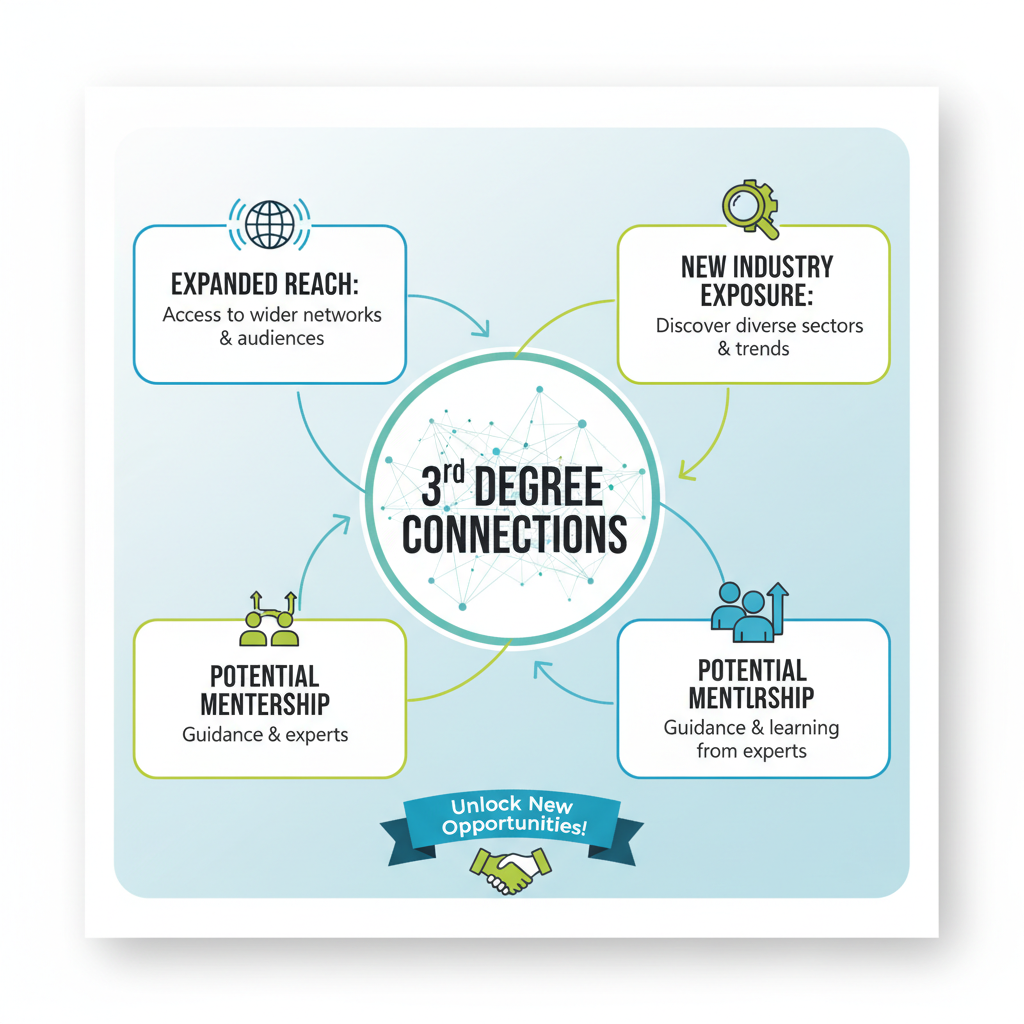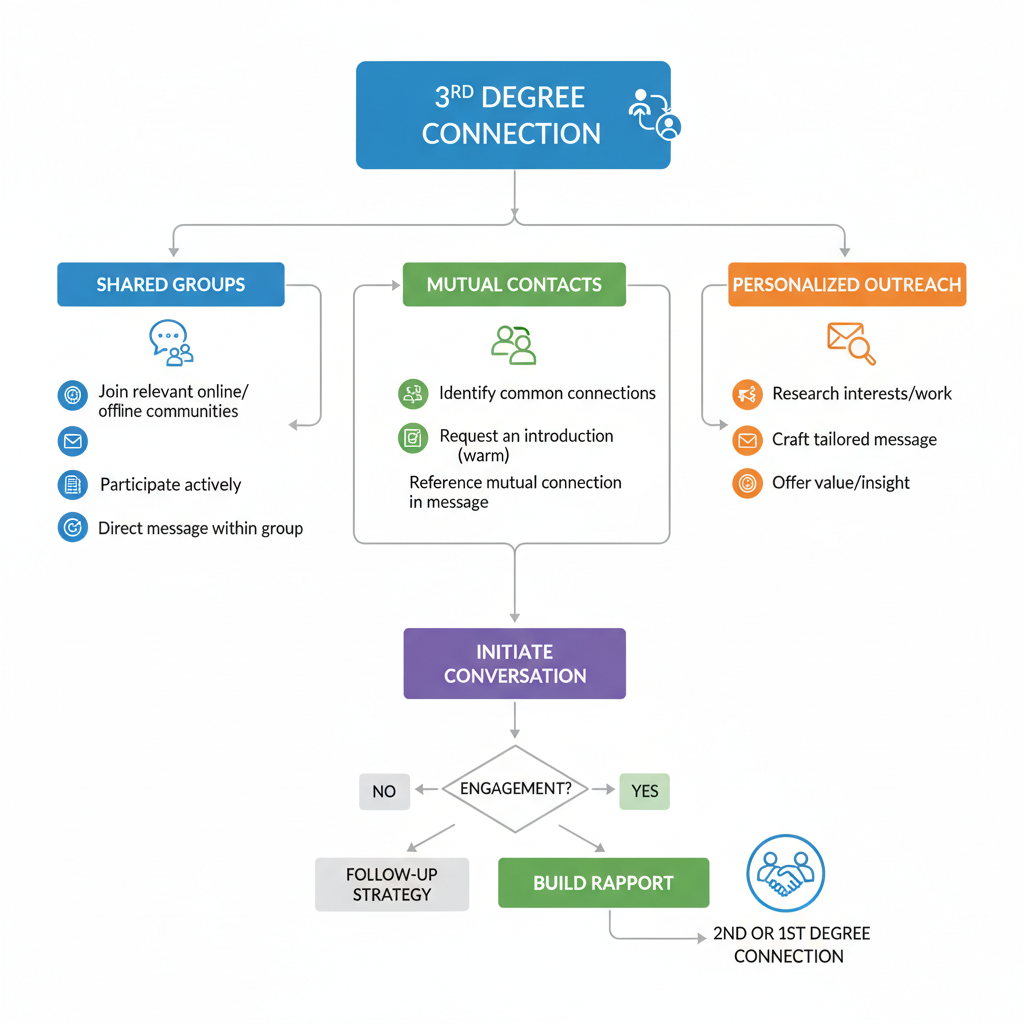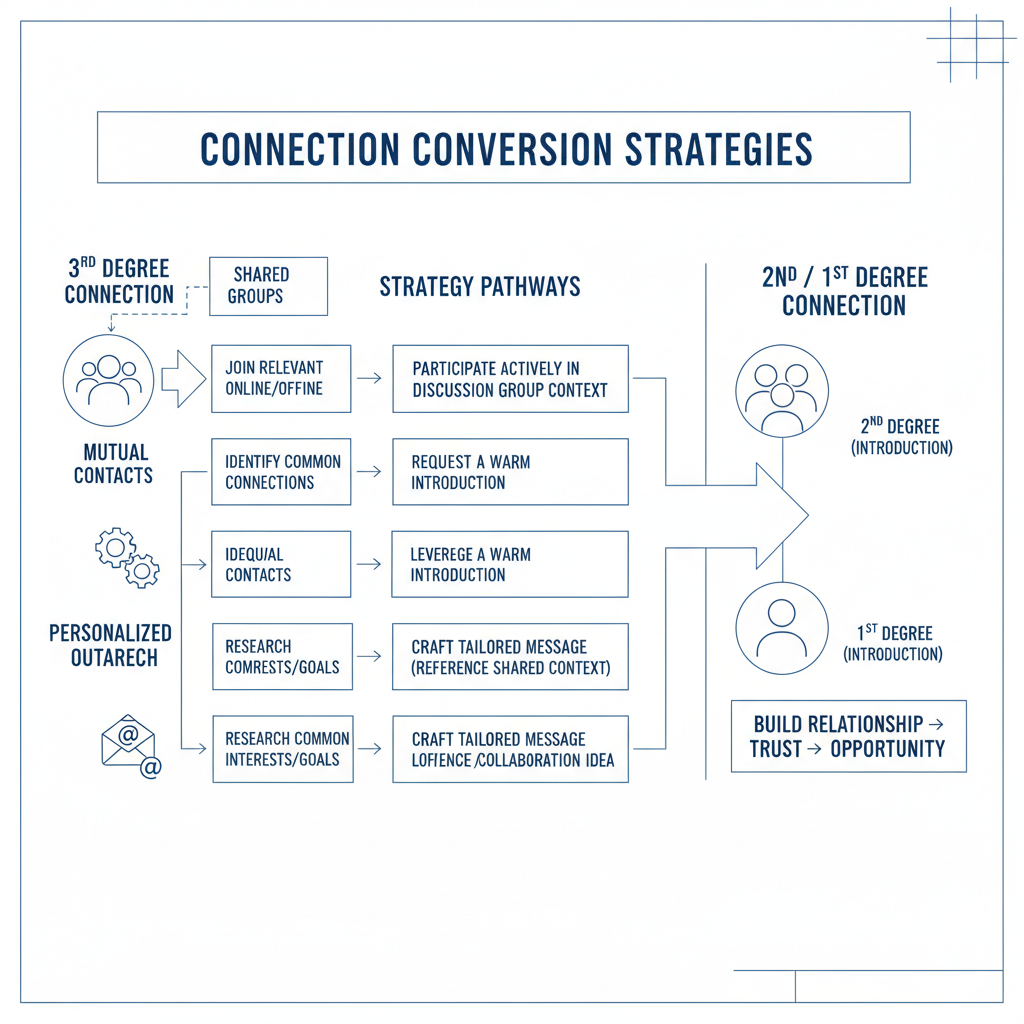LinkedIn 3rd Connections: Benefits and Networking Strategies
Learn how to leverage LinkedIn 3rd degree connections for networking, business growth, and career opportunities with proven outreach strategies.

Introduction to LinkedIn Connection Degrees
Understanding LinkedIn connection degrees is essential for anyone looking to maximize business development, networking, and career growth on the platform. The concept of 3rd degree connections — people separated from you by two intermediary contacts — is often overlooked, yet they can open doors to new opportunities when approached strategically. This guide explains the different connection degrees, how LinkedIn determines them, and practical ways to turn distant connections into valuable partnerships.
---
Understanding LinkedIn Connection Degrees
LinkedIn uses a system of "degrees" to indicate how closely you're connected to another user. This helps you assess relationship strength and determine the best approach for outreach.
1st Degree Connections
These are people you are directly connected to on LinkedIn. Either you have accepted their invite, or they have accepted yours. You can message them directly.
2nd Degree Connections
These individuals are connected to your 1st degree contacts, but not directly to you. You can usually send them a connection request, and often see some of their profile details.
3rd Degree Connections
A 3rd degree connection is linked to you via your 2nd degree connections. They are two "hops" away in your network. You may see limited profile information and might have restrictions on messaging.

---
How LinkedIn Determines a 3rd Degree Connection
LinkedIn calculates degrees based on the shortest path between you and the target contact:
- First hop: You → Your 1st degree connection
- Second hop: Your 1st degree → Their 1st degree (your 2nd degree connection)
- Third hop: They → The target connection (your 3rd degree connection)
If there is no shorter path, they appear as a 3rd degree connection.
For very distant members outside these degrees, they may simply be labeled as "Out of Network."
---
Benefits of Engaging with 3rd Degree Connections
Even though 3rd degree contacts are further away, they can be highly valuable for:
- Expanding Industry Reach: Access people in new companies or sectors.
- Diverse Perspectives: Gain insights from different networks.
- Warm Introduction Potential: Use mutual connections to facilitate engagement.
- Business Development: Unlock fresh sales leads and partnership opportunities.
- Recruitment: Discover talent you wouldn’t encounter from 1st/2nd degrees alone.
---
Strategies to Move from 3rd to 2nd or 1st Connection
Here are proven tactics to close the gap:
- Leverage Mutual Contacts: Ask your 2nd degree connection to introduce you.
- Join Same LinkedIn Groups: Increase profile visibility and interaction.
- Engage on Posts: Comment thoughtfully on shared or mutual interests.
- Personalized Connection Requests: Create tailored messages that reference common ground.

---
Leveraging Shared Groups and Mutual Interests
Joining relevant LinkedIn groups can bridge the distance between you and a 3rd degree connection. Shared groups often allow direct messaging and create conversation starters.
Examples of mutual interests to highlight:
- Attended the same conference
- Work in similar technology stacks
- Follow specific thought leaders
- Volunteer in related causes
---
Crafting Connection Requests for 3rd Degree Profiles
A good connection request should be:
- Personalized – Mention how you found them or a mutual interest.
- Contextual – Explain why you’re reaching out.
- Value-driven – Show how connection could benefit both parties.
- Concise – Keep it brief and professional.
Sample message:
Hi [Name],
I came across your profile while exploring leaders in renewable energy.
We share an interest in sustainable tech and a mutual contact, [Mutual Connection Name].
Would love to connect and exchange ideas.
Best,
[Your Name]---
Using LinkedIn Search and Filters to Identify High-Value 3rd Connections
LinkedIn’s search can be a powerful tool:
- Apply industry filters to narrow focus.
- Use location filters for regional relevance.
- Filter by current company for target accounts.
- Search via keywords relevant to your market.
Pro Tip: Combine keyword and connection degree filters to specifically surface 3rd degree contacts.
---
Engaging via Comments, Reactions, and Shared Content Before Sending a Request
Before reaching out directly:
- Like and react to their posts to signal genuine interest.
- Comment meaningfully with insights or follow-up questions.
- Share their content within your network (tag them when possible).
This builds familiarity and increases the likelihood they'll accept your request.
---
Common Mistakes When Trying to Connect with 3rd Degree Contacts
Avoid these pitfalls:
- Sending generic requests without personalization.
- Spamming multiple requests without context.
- Ignoring mutual connections who could introduce you.
- Overly sales-focused approaches right from the start.
- Not respecting privacy boundaries.
---
Privacy and Visibility Considerations on LinkedIn for Connection Degrees
LinkedIn controls what profile information you see based on connection degree:
| Degree | Profile Visibility | Messaging Capability |
|---|---|---|
| 1st | Full profile visible | Direct messaging |
| 2nd | Most profile sections visible | Message via InMail or after connecting |
| 3rd | Limited profile visibility | InMail or after connecting |
Tip: Your privacy settings influence how others see you as well; consider making your headline visible to all.
---
Case Study: Turning a 3rd Degree Connection into a Business Opportunity
Let’s look at a real scenario:
Background: A marketing consultant was seeking entry into the renewable energy sector.
Steps Taken:
- Joined a LinkedIn group dedicated to clean energy innovations.
- Engaged with posts from a 3rd degree CTO of a target company via thoughtful comments.
- Found a mutual 2nd degree contact and requested an introduction.
- Sent a personalized request emphasizing shared clean energy interests.
Outcome:
- The CTO accepted the invite, making them a 1st degree connection.
- Within two weeks, the consultant pitched marketing solutions and landed a project worth $50,000.

---
Tracking and Optimizing Outreach to Expand Network Efficiently
To refine your 3rd degree connection strategy:
- Maintain a spreadsheet or CRM to log outreach attempts.
- Track metrics like:
- Requests sent
- Acceptance rate
- Leads generated
- Review which messages resonate most.
- Adjust targeting based on engagement patterns.
Automation Tip: Use LinkedIn’s “Saved Searches” to stay updated on new potential 3rd degree contacts in your niche.
---
Summary and Next Steps
Building relationships with LinkedIn 3rd degree connections takes patience, personalization, and consistent engagement. By understanding degree structures, leveraging mutual contacts, and applying smart outreach tactics, you can transform distant contacts into valuable allies.
Ready to grow your LinkedIn network? Start applying the strategies above to connect with meaningful 3rd degree profiles today — and watch your professional opportunities expand.




